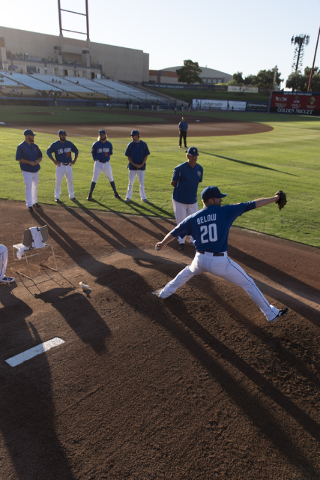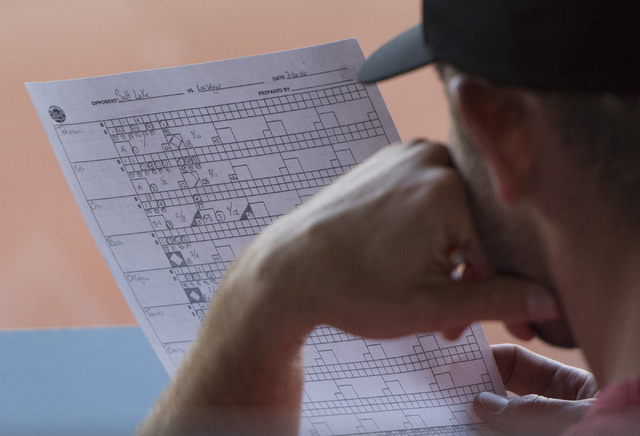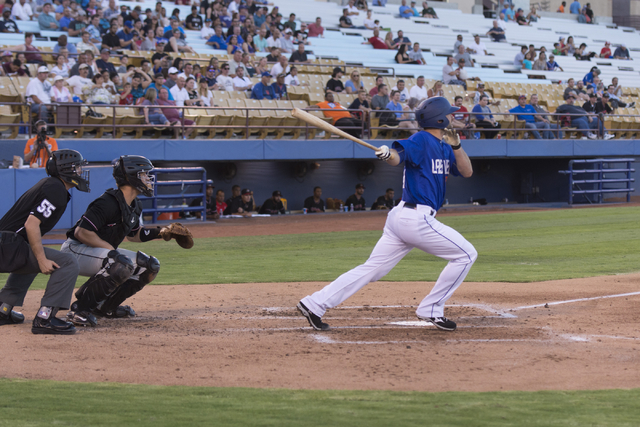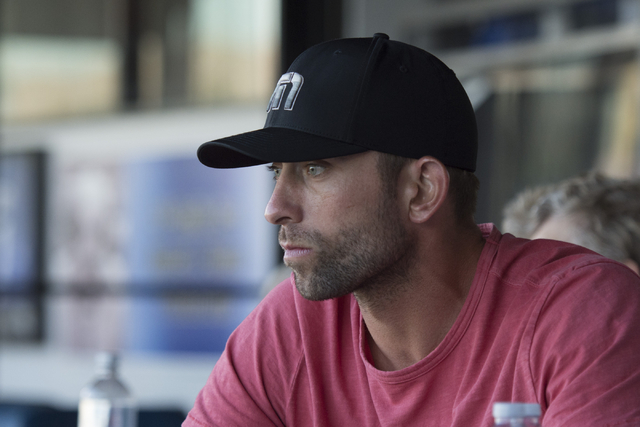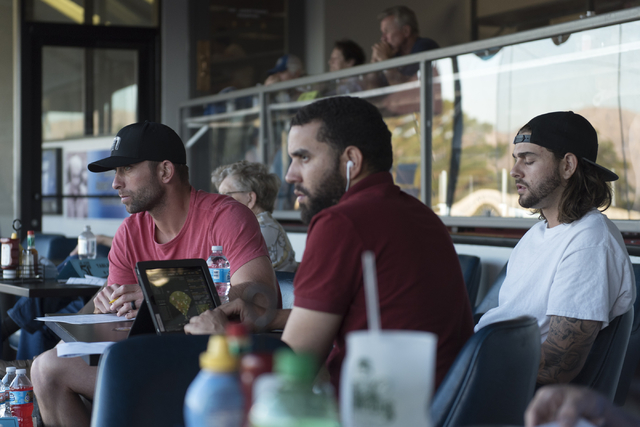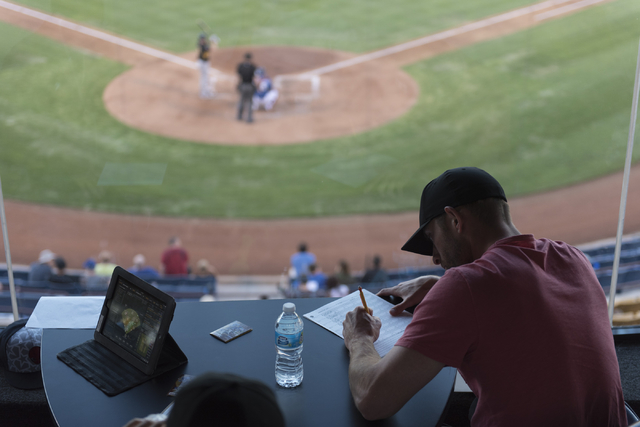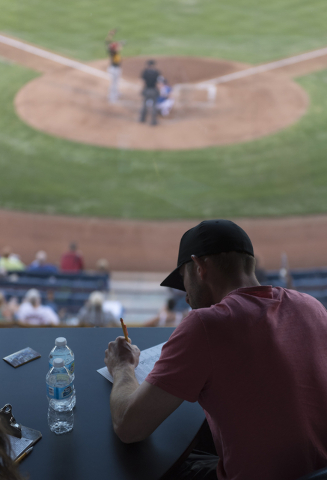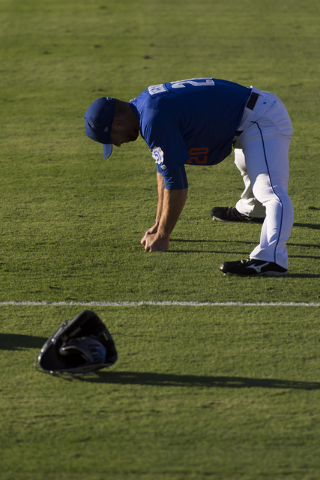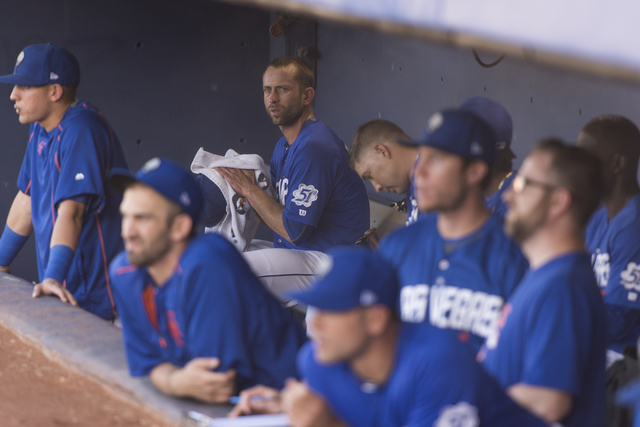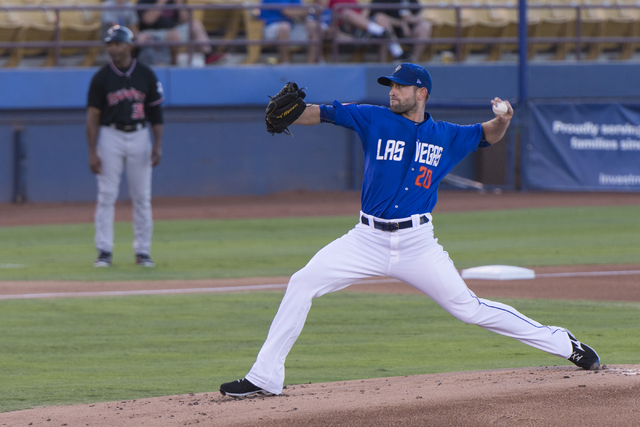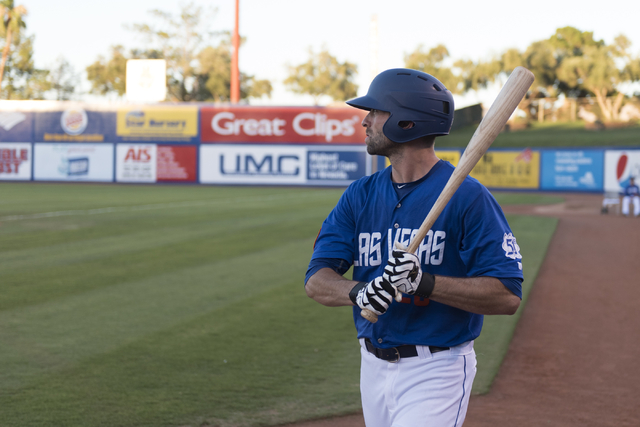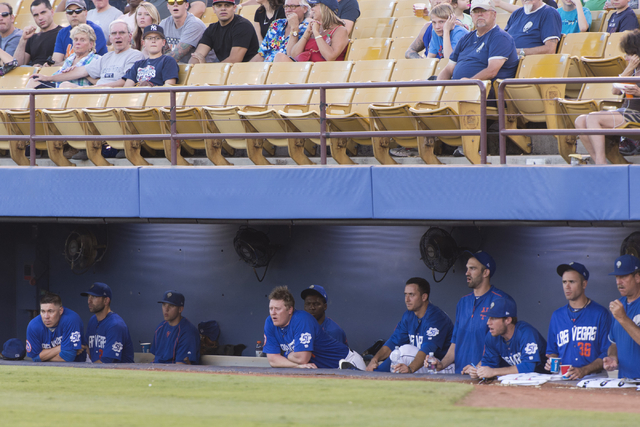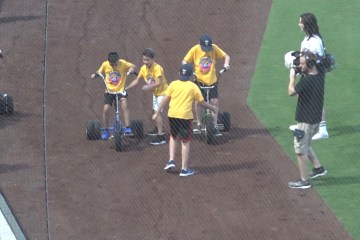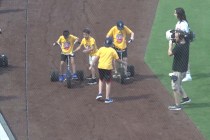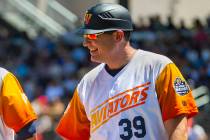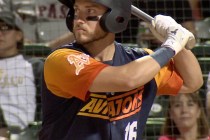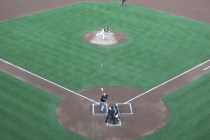Here’s a look at the 5-day routine of a Las Vegas 51s starting pitcher
By this point, Duane Below has been pitching long enough to know what works for him.
But back in 2009, three years after he was drafted, things were a little different.
“From day one, I guess when I started playing pro ball, you have the routine but it didn’t really take hold until I got hurt in 2009. That made me realize how important it was,” Below said. “I wasn’t as committed and that’s probably why I got hurt.”
As a result, Below had Tommy John surgery, which wiped out most of his season.
Now the 51s left-handed starter sticks to a regimented routine to ensure he’s ready to pitch every fifth day. Which begs the question: What does a starting pitcher do on the other four days?
The Review-Journal looked at Below as an example of the life of a starting pitcher and how it is built on that five-day routine. Almost immediately after a pitcher finishes his start, he’s focusing on building his arm and body back up to do it again five days later.
“A starting pitcher’s life is great. You pitch one day, you’ve got four days off,” pitching coach Frank Viola joked. “It’s a beautiful thing.”
Of course Viola, himself a longtime starter in the majors, knows as well as anyone how much work actually goes into those “four days off.”
DAY 1
The first day after a start — flush day — is a critical one in the process.
Many times, the previous day’s starter is the first one on the field, running along the warning track before the pitchers go out to do their conditioning shortly after 3 p.m.
“The idea of it is that you flush out any lactic acid that built up … in your lower half throughout the course of the game,” strength and conditioning coach Jon Cioffi said. “They’re getting all their power through their legs and transferring it from their arm so the flush run is to flush the body of lactic acid.”
That run varies in time by starter, though Below said his is usually 10 to 15 minutes and 12 to 16 three quarter poles. One pole ranges from foul pole to foul pole, so after three quarters of the distances, pitchers stop, walk the rest and then restart the process.
As far as throwing, Viola says it’s a laid-back day.
“You have your choice of not even picking up a ball or throwing very light,” Viola said. “Most of your work is done with strength and conditioning that day.”
After conditioning, the previous night’s starter is on the bucket during batting practice, meaning he’s standing in the middle of the field and is responsible for filling a bucket with baseballs and taking it in between groups. Below then likes to do his lower body lifting.
After that, the pitcher gets to stay in the dugout with the clicker during the game to track pitch counts.
“It’s just something to do. It keeps them involved in the game because they have to pay attention a little bit,” Viola said.
DAY 2
On the conditioning side, the workload decreases after Day 1.
In addition to a couple three quarter poles, Below will do six runs to center field and six 30-yard sprints.
It’s also the day to start ramping back up with the throwing program.
“They’ve got to get up, see how they feel and stretch it out between 120-180 feet,” Viola said.
Each pitcher is different — while some like to throw longer than others, other pitchers might throw four or five times from 160 to 180 feet and then work his way closer, Viola said.
Colored cones are set up to show distance and Viola described the throwing program, which he said was set up by pitching coordinator Ron Romanick, as “pretty basic.”
“At 80 feet, you throw five to 10 changeups and get a feel for that and then you work your way back,” Viola said.
Starters also have to shag batting practice before a trio heads up to the club level.
This day, the pitcher will be in charge of the hitters chart, helping track opposing pitchers and how they attack 51s batters. At the end of the night, the chart is turned over to hitting coach Jack Voigt.
DAY 3
With Viola standing a couple feet away, starters throw their side session after doing normal conditioning work.
Pitchers tend to throw anywhere from 25 to 45 pitches. Below likes to stay in the 28 to 34 range to save his arm a bit. If there’s something Viola wants him to work on, they’ll discuss it beforehand.
Then, he’ll set to throw, focusing on being consistent.
“Early on in the bullpen when I first start, it’s just trying to repeat my delivery and get the feel of my pitches and then toward the end is when I’ll … simulate a batter, sometimes have the bullpen catcher call the pitches and game (simulate),” Below said.
Occasionally, he’ll have Viola stand in to help get the feel of throwing to a hitter. After the side is over, pitchers head onto gassers, a timed conditioning run at a set distance. Each gasser is 60 yards total — 30 in one direction, 30 in the other. After a recent side, Below ran two sets of four.
“You’re just kind of working on them being able to repeat the same amount of work in the same amount of time,” Cioffi said.
Below likes to get his lower body lifting on day three to have a day of recovery before his start.
Like Day 2, Day 3 includes more shagging and more charting.
This day, the pitcher would be on iPad duty, tracking 51s pitchers and their pitch speed, result (ball/strike) and location, among other things.
At the end of the day, all the information is handed over to the Mets.
DAY 4
In preparation for start day, the fourth day is the lightest.
“The running is shortened up, the throwing program is based on what you want do to,” Viola said. “I know a lot of guys like to throw a little shorter the day before they pitch.”
Cioffi said most starters do some sprints the day before they start, but it’s pretty light on the conditioning side, too.
Each starter might have a different routine that day, depending on how he’s feeling.
“The biggest thing is stretching just to make sure I’m loose, get my throwing in, make sure I’m prepared and make sure my body’s ready to go,” Below said. “You’re always going to have issues. Everybody has pain. Not necessarily pain, but discomfort, so you just try to take care and get yourself ready.”
Below said he throws until he’s loose, throwing each pitch a few times from flat ground.
“(There’s) times you might throw a little more if you’re trying to work on something, but for the most part, you try to limit your throwing because (the next day) you’re trying to go out as long as you can,” he said.
And again, there’s more shagging batting practice. Below will also hit some of his own before heading upstairs to chart that night’s 51s starter for Viola.
Charting includes tracking balls and strikes, pitch speed, first-pitch strikes, pitch count, outs and keeping score.
“I enjoy it because it keeps you in the game,” Below said. “It keeps you paying attention and gives you an idea of pitches to throw and that’s the biggest thing is that’s how I feel I learn is (by) watching the game. If I’m not doing that, then I’m sure it’d be a lot harder to pay attention.”
DAY 5
Starters are grounded in routine, which means their start day is a little bit different.
For Below, one of the first things he does when he arrives at the park on his day is take batting practice. Though he doesn’t typically like taking it that day, he’s fallen into that routine.
“Probably about my third or fourth start in, I was like ‘I need to take BP,’ because I want to get better because I’m not necessarily a very good hitter,” Below said. “Well, I’m not a good hitter at all.”
Then there’s a bit of time for relaxation and eating — something light that will sustain him throughout a game. He doesn’t have a set pregame meal, though if he pitches really well in one start, he’ll probably stick with that food the next time.
There’s a quick meeting with Viola and that day’s catcher to talk about their game plan and some stretching. For a 7:05 p.m. game, Below is out in the bullpen by 6:45 getting warmed up, trying to keep it to less than 30 pitches.
“When he’s warming up, warm-ups mean jack diddly squat because what you do there does not dictate what you do (in game),” Viola said. “but if he’s getting ahead of himself or he’s a little frustrated over there, it’s like … ‘Hey, relax, there’s no hitters up there.’
“‘Just relax and take it easy,’ and he does and he’s fine but he’s very meticulous in his work habits.”
For a home game, Below will try to finish about five minutes before the game’s start so he has enough time to relax for a minute and drink some water.
During the game, he likes to keep his focus sharp and doesn’t like talking while sitting in the dugout.
“For the most part, I like to keep to myself so I can adjust to things I need to adjust to,” Below said.
Once he’s taken out, he might stick around in the dugout for a little while to be a cheerleader before heading back to do shoulder exercises with weighted dumbbells, a band and the physioball.
Before the game is over, the cycle already has begun again with him getting ready for his next start.
Betsy Helfand can be reached at bhelfand@reviewjournal.com. Follow on Twitter: @BetsyHelfand





